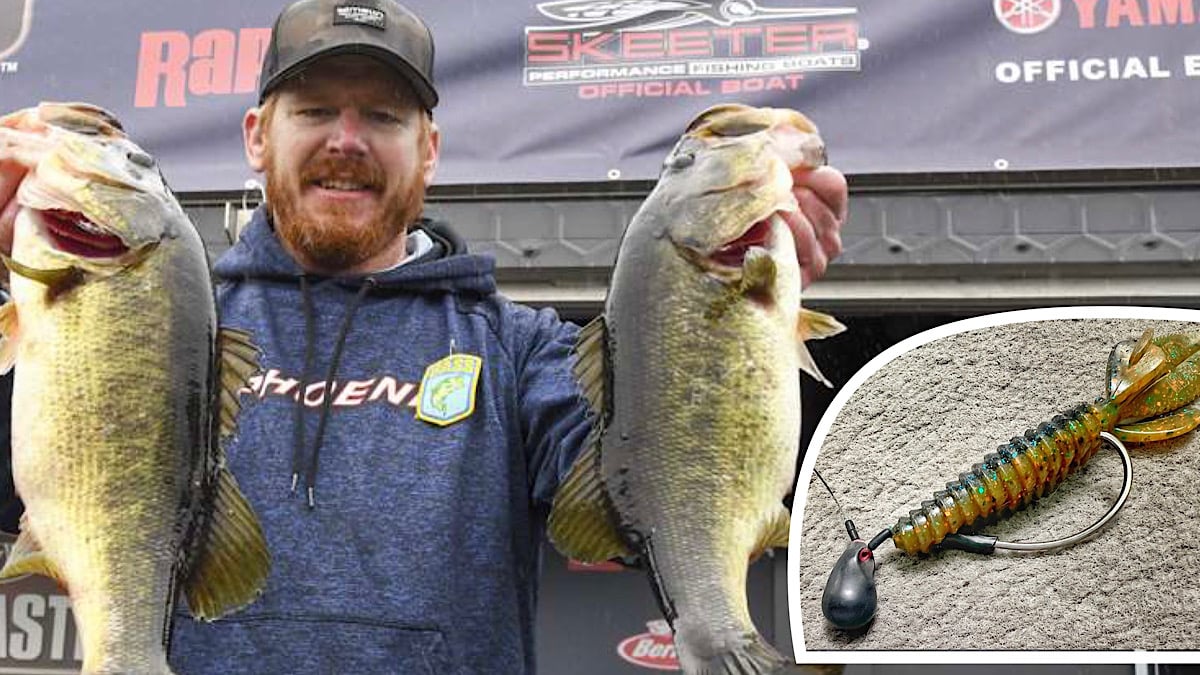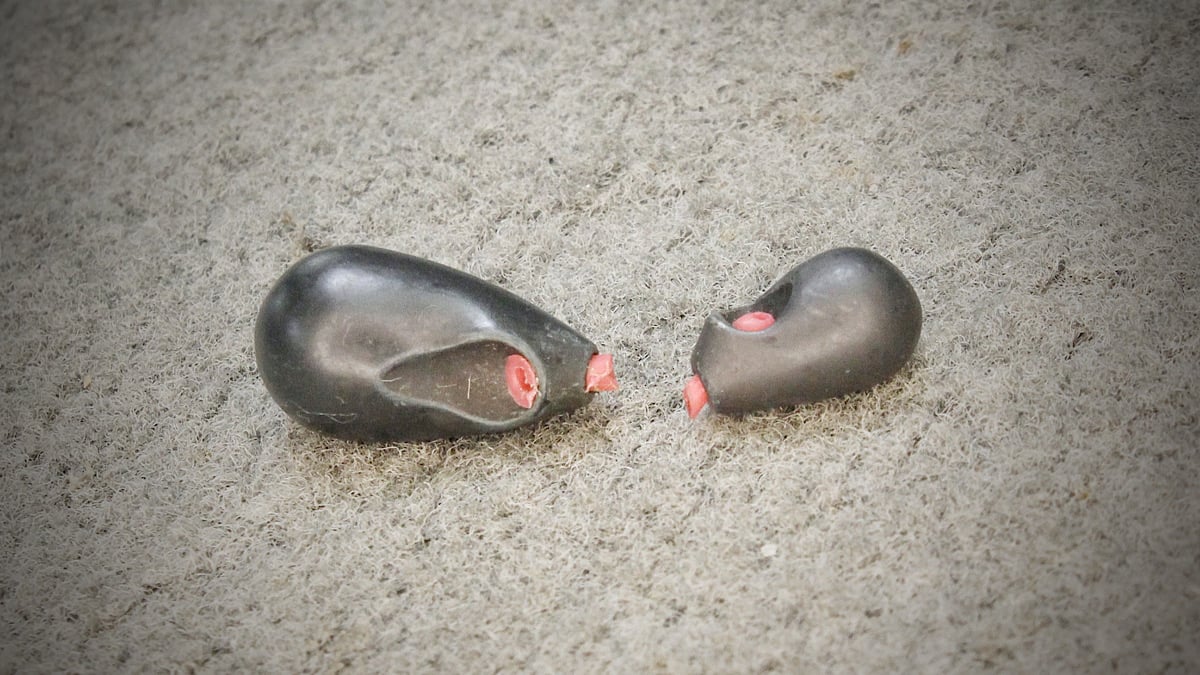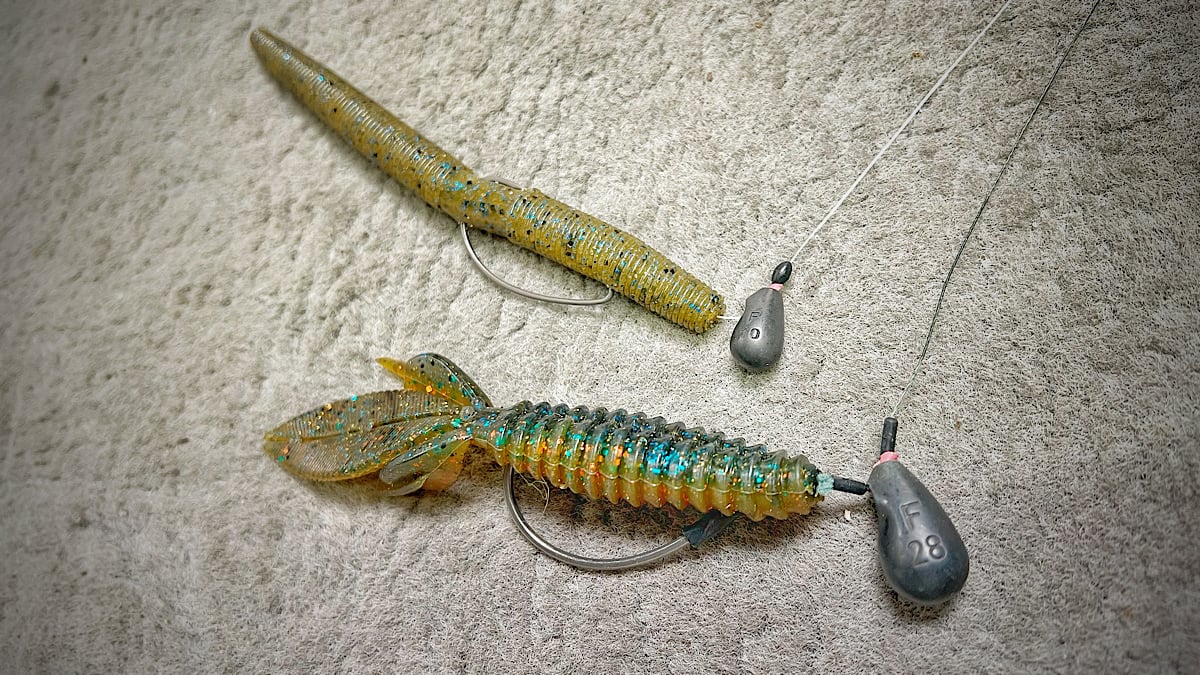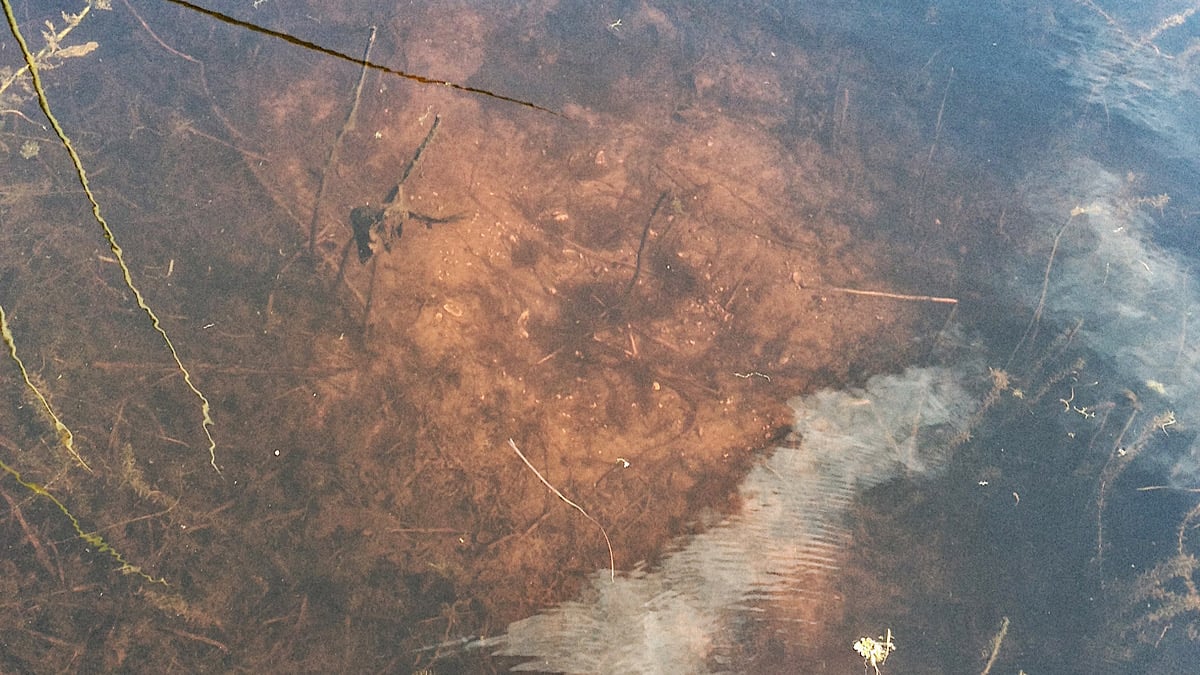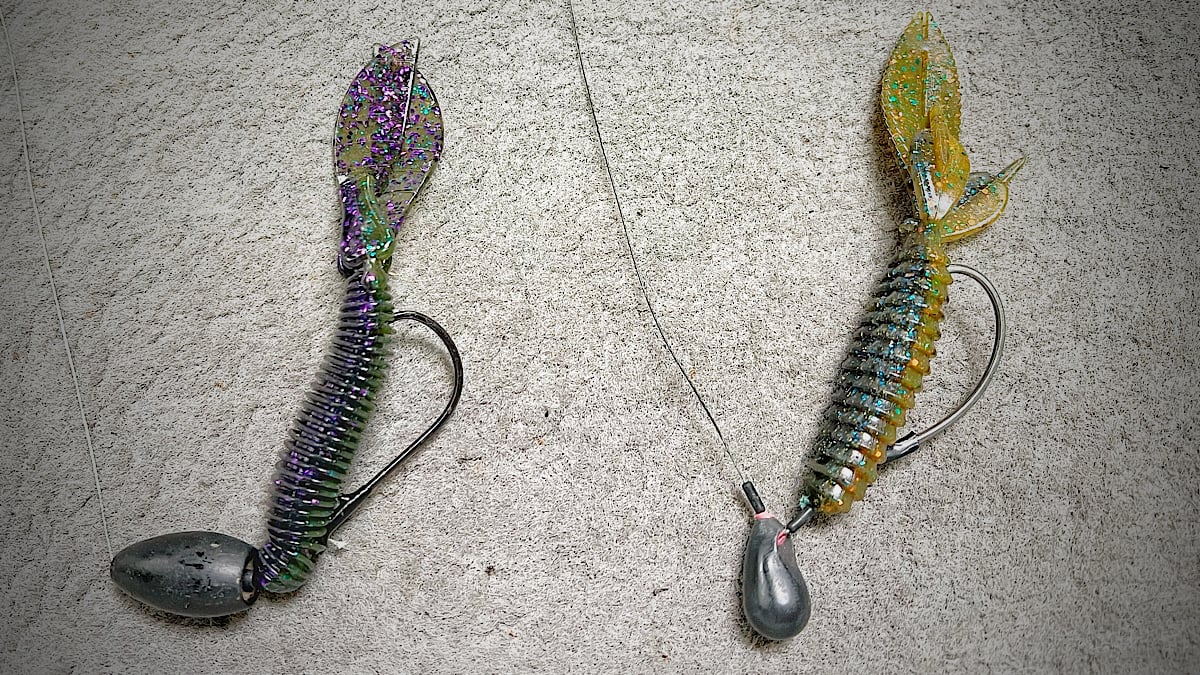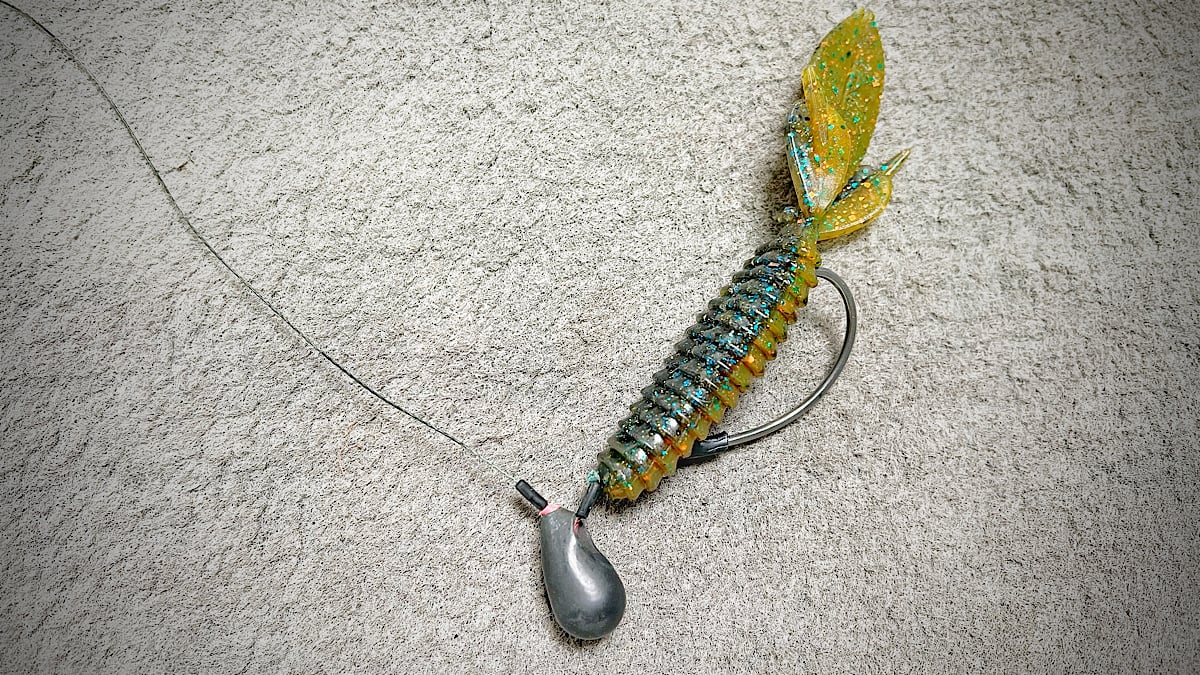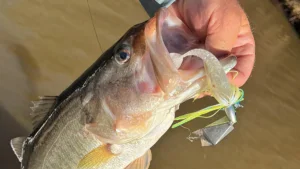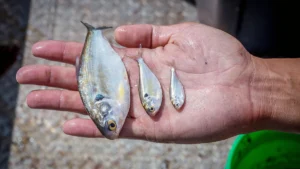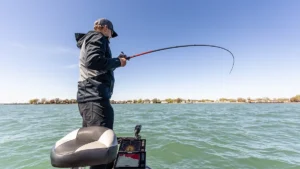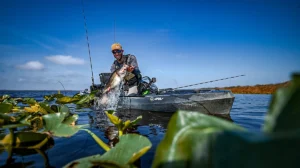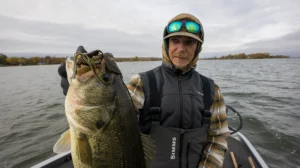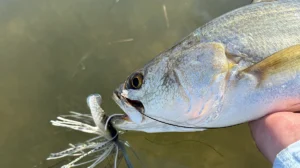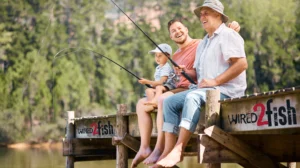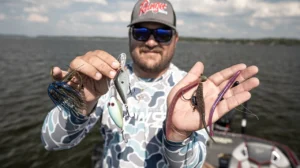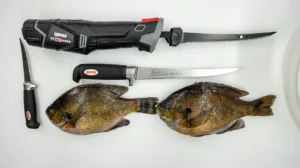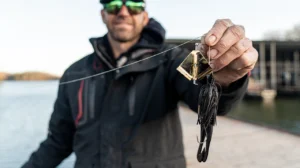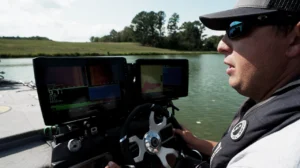The opportunity to write these words in regards to new bass fishing rigs seems rarer and rarer these days, but we have something truly innovative and new to share with you today. It’s a rig a friend of mine has put me on. He finished 3rd in the Bassmaster Open on Lake Toho a few weeks ago using this new bass fishing rig he’s been playing with recently.
His name is Tom Frink and for lack of an official name for the rig we decided to kick a few around. The “Frink Nasty” I personally liked or the “Frinky Dinky Rig” I got a kick out of, too (both my ideas). But the most appropriate name for it would likely be the Black Bean Rig, since that’s the namesake of the key component that sets this rig apart. The Ryugi Black Bean Tungsten Sliding Sinker.
We’re going to explain how to set up the Black Bean Rig, Frink’s recent experiences with it and how you can use the Black Bean Sinker to modify a wide variety of presentations. This is definitely a weight you’re going to want to try, as it puts a new and much more efficient spin on a few popular techniques that are already out there.
The weight
Before we discuss how Frink sets up this rig and his recent tournament success with it, let’s first take a closer look at the Ryugi Black Bean Tungsten Sliding Sinker itself. This is an extremely intelligently designed weight and one I haven’t seen anything comparable to. It has a teardrop shape and kind of reminds me of a bell weight. But by putting an insert in the weight, Ryugi created something revolutionary here that I guarantee other companies will catch on to and duplicate.
The insert creates a better point of contact between the line and the weight than traditional bullet-style weights. This also allows the weight to stay on the bottom better and maintaining better bottom contact means more sensitivity. As the Black Bean weight is dragged along, the majority of the weight maintains contact with the bottom across a larger surface area than a traditional bullet-style weight. When dragging a bullet weight, the majority of the weight is actually raised up off the bottom since the line goes into the nose of the weight, leaving less contact area between the weight and the bottom.
How Frink rigs the Black Bean Rig
Frink starts off by putting a bobber stopper on his line. He then runs his line through the insert of the weight. With lighter weights, he then simply ties on a hook and rigs up his preferred soft plastic, pulling the bobber stopper and the weight down near the eye of the hook and the soft plastic.
“If I’m using a heavier weight, I’ll put another bobber stop between the weight and the hook to protect the knot,” said Frink. “Then I’ll tie the hook on.”
Using a bobber stopper to protect the knot is a good idea with heavier weights. It also allows you to modify this rig a bit on the fly and create a short Carolina rig of sorts, by sliding the weight and both bobber stoppers up your line 10 or 12 inches.
Frink has actually been trying something similar out with this rig as well, but with only the top bobber stopper in place and using a lighter weight. By sliding the bobber stopper up his line about 10 inches, he can essentially create a Free Rig on the fly. This allows his bait to float and drift around a bit behind the weight, which gives the bait a more natural look. This variation of the Black Ben Rig was responsible for a 4-pounder Frink caught on day 2 of the 2022 Bassmaster Open on Lake Toho.
Finding beds, even without seeing them
Pitching the Black Bean Rig to beds Frink could see in practice for this tournament, he developed a sense of what the beds felt like. And in the tournament, when he couldn’t see the beds as well or even at all, he could fish his way into a bed and feel the bottom contour change because of the sensitivity of the weight.
“I’d drag it and feel soft bottom and then I’d feel it go into a little hole where the bass had fanned out a bed,” Frink said. “I’d feel the hard bottom and then I’d drag it up out of it.”
By blind-pitching to areas where Frink believed beds should be, he was able to stay back off the beds and fish them without even visually looking for the light spots, that are the typical indicators of a bed cleaned out by a bass.
“A lot of times with that rig, I’d be able to feel if there was a bed there,” said Frink. “That was one of the things that I felt like was a big player. Having the confidence to know, ‘This feels like a bed’.”
Frink would then make repetitive casts to a bed he couldn’t actually see, but he could feel. And this resulted in a handful of fish catches that he is confident were spawners on bed, even though he was fishing for them by feel alone and not by sight.
“On the final day, I was seeing light spots, but it was cloudy and windy so I couldn’t see unless I was right up on the reed edge,” Frink said. “But I didn’t want to get too close, so I would just pitch it into little cuts in the reeds and right up to the reeds.”
Because of the design of this weight, it falls straight down like a drop shot where traditional bullet-style weights tend to glide around a bit and not fall straight. This greatly increased Frink’s accuracy and helped him to fish more efficiently in the beds he could see and the areas where he felt certain there were beds that he couldn’t see.
Punching with the Black Bean Rig
Punching matted vegetation is a great way to catch big bass in Florida, as well as in other places around the country. In practice, Frink found that he could get a lighter Black Bean weight to go through the matted vegetation than he could a tradition bullet style punch weight.
“I had an 1 1/2-ounce Texas rig punch weight rigged up too,” said Frink. “And I was getting the one ounce (Black Bean) weight into a lot of places that that ounce and a half would go through.”
Because of the design of the Black Bean weight, the line doesn’t drag on the cover like it does with a traditional bullet-style punch weight. When pitching a traditional punch weight, the weight falls through the air and quite often, hits the cover horizontally. Since the line enters a traditional weight from the pointed end, it drags across the cover and slows the bait down, even catching on the cover and preventing the bait from going through the mat clean.
With the Black Bean weight, the line comes through and back out the top of the weight, allowing the bulk of the weight to hit the mat first and eliminating a lot of the resistance of the line on the mat. This allowed Frink to use a lighter Black Bean weight, as opposed to a heavier traditional punch weight to get through the same cover.
Texas rig modification
In addition to the heavier set up Frink had rigged on braided line to punch matted vegetation and fish around thicker cover, he had a lighter Black Bean Rig on fluorocarbon for the sparser cover.
“I’d cast with it more, like a Texas rig,” Frink said. “It’s really good for feeling hard bottom. I’m lifting up on it as I drag it but the weight still has really good contact with the bottom. Where with a Texas rig, when I lift up on it, it brings the weight up off the bottom.”
Again, sensitivity is all about bottom contact. The greater the area of weight maintaining contact with the bottom, the better you’re going to be able to feel the bottom. This makes the Black Bean weight a great alternative to traditional bullet-style weights for Texas rigging.
“When I’d pick up (the Black Bean Rig) and throw it, I could feel the bottom so well with it,” said Frink. “I know you can feel bottom with a (traditional) Texas rig too, but it definitely was enhanced, like I could feel it a lot better.”
In conclusion
I’ll go ahead and step out on a limb here and say it: The Black Bean Rig is going to be the next big thing. The key reason is that the Ryugi Black Bean Tungsten Sliding Sinker can be used to modify a lot of current techniques that are already prevalent bass catchers.
What I would consider the basic Black Bean Rig is nothing more than a traditional Texas rig that’s rigged with a Black Bean Sliding Sinker. But changing this one key element makes for a much more efficient punch rig than a traditional Texas-rigged punch weight and makes for a much more sensitive Texas rig for casting than a traditional bullet-weighted Texas rig.
But in addition to the basic Black Bean Rig, there are ways to use a modified Black Bean Rig to create a better version of a Free Rig and short Carolina Rig, by adjusting the number and position of the bobber stoppers that hold the weight in place. We didn’t even discuss in this piece how the basic Black Bean Rig even makes for a better wobble head, as it’s a bit more sensitive even still than this bait.
That’s the thing with something this new. As more people start to experiment with the Black Bean Rig, it will continue to evolve and showcase ways where it sets itself apart from other techniques and puts the exclamation point on some of the old ones.
One thing’s for sure, as I stated early on in this piece, I think this is one you’re going to want to try out for yourself.
